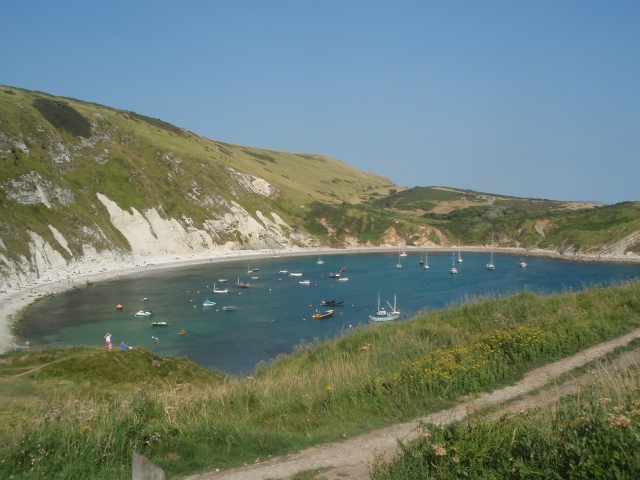|
Lulworth Cove
Lulworth Cove is a shell-shaped bay on the south coast of Dorset. It is a feature of a concordant coastline, where the surrounding geological structure runs parallel to the coast, with the beds (geological strata) dipping steeply to the north. The five rock types found in Lulworth Cove are (starting with the oldest, and most seaward) Portland Limestone, Purbeck Beds, Wealden Clay, Greensand and Chalk. The most resistant rocks are the Portland Limestones and the Chalk, whereas the Wealden Clay is poorly consolidated and vulnerable to sub-aerial weathering and erosion. The geology interacts with marine (wave action) and sub-aerial processes to produce this distinctive landform.
|

|
An aerial photograph of Lulworth Cove shows the distinctive shape of the landform. The Portland Limestone forms the headlands at the seaward edge of the cove and the Chalk forms the steep cliffs at the rear of the cove. The valley to the western edge of the cove is formed in the Wealden Clays and contains the stream that is thought to be responsible for the initial weakness in the coastline that led to the formation of Lulworth Cove as we see it today. |
|

|
The Chalk at the landward margin of Lulworth Cove forms a resistant ridge in the landscape running parallel to the coast. The Chalk is resistant to weathering and erosion, and is slowing the northward development of the cove. The western and eastern flanks of the cove comprise Wealden Clays which are vulnerable to sub-aerial erosion. The development of the cove is more rapid along this zone of weakness. |


|


